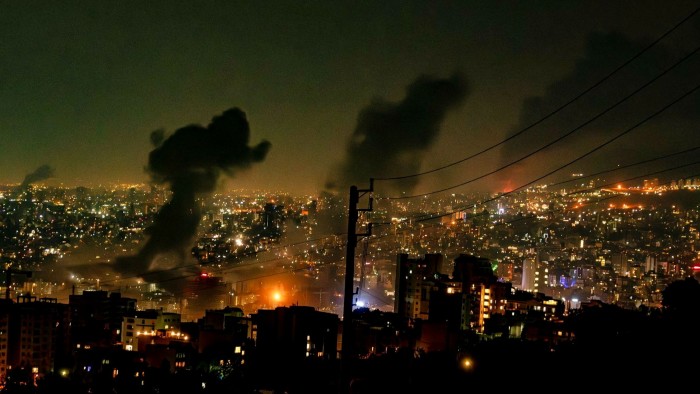Unlock the White House Watch newsletter for free
Your guide to what Trump’s second term means for Washington, business and the world
After returning to the White House promising to end the world’s conflicts, Donald Trump finally has a ceasefire. The US president failed in his push to end Russia’s war in Ukraine and allowed Israel to break the truce that halted the conflict in Gaza. But on Tuesday, he brokered an end to Israel’s assault against Iran.
Trump’s efforts to halt a war that risked spilling across borders and disrupting global energy supplies was a welcome, if belated, move. He did, after all, acquiesce to Israeli Prime Minister Benjamin Netanyahu’s decision to launch the war in the first place and then briefly but forcefully joined in. Iran’s calibrated response to the US bombing of its nuclear sites — a strike on a US base in Qatar — allowed Trump to claim victory and try to move on.
It is, however, a perilously fragile truce. The enmity between Israel and Iran will have only deepened after 12 days of conflict. Outgunned and heavily infiltrated by Israeli intelligence, the Islamic republic has endured devastating blows. Many of its top commanders have been killed. The attacks have destroyed its air defences, bombed nuclear plants and left hundreds of civilians dead. But Iran continued to fire missiles at Israel throughout the hostilities. Those that got through caused significant damage, killing 28 people.
Netanyahu claims his war objectives were met. But his prime goal, the destruction of Iran’s expansive nuclear programme, may be only partially achieved, underlining the folly of a war he should never have started. A provisional US intelligence report concluded the programme is likely to have been set back by only months — even after Trump ordered the US military to use huge bunker-busting bombs to strike Iran’s main enrichment facilities. Moreover, the whereabouts of the regime’s stockpile of 400kg of uranium enriched close to weapons grade is unknown.
The danger is that Israel’s assault pushes the programme further underground and convinces Iran’s leaders of the need to weaponise to restore their deterrent. Iran’s parliament has voted to suspend co-operation with the International Atomic Energy Agency, the watchdog monitoring its nuclear activity. Another risk is that Israel, overconfident and unrestrained, strikes unilaterally if it perceives a threat as it has done on an almost daily basis against Hizbollah in Lebanon — despite both agreeing to a US-brokered ceasefire in November.
Much will now depend on Trump. The roots of the crisis can be traced to his fateful first term decision to withdraw the US from the 2015 accord that Iran signed with world powers. Tehran only began ramping up its enrichment a year after Trump abandoned it. Trump began his second term pledging to bring peace to the Middle East. But he gave Netanyahu free rein to continue Israel’s devastating assault in Gaza, and backed the Israeli leader when he launched the attack on Iran.
If he wants the ceasefire to endure, Trump must be willing to pressure both parties. He should focus on diplomatic efforts to ensure a sustainable resolution to the nuclear crisis. He must also urge Netanyahu to halt the war in Gaza if the region is to return to a semblance of stability. Iran will have to reverse its decision to suspend co-operation with the IAEA and avoid the temptation to pursue the bomb. A deal brokered by Trump is its best path forward, and more in its interests than becoming a pariah state like North Korea.
When Trump announced the Israel-Iran ceasefire he named the conflict “the 12-day war”. He seemed to be making a comparison to the 1967 six-day war. At that time, Israel seized Arab lands, much of which it occupies today, and then, it is believed, begun weaponising its undeclared nuclear programme. The legacy of that conflict remains one of the region’s key sources of instability. Trump should ensure the legacy of this war does not have a similarly destabilising effect.
